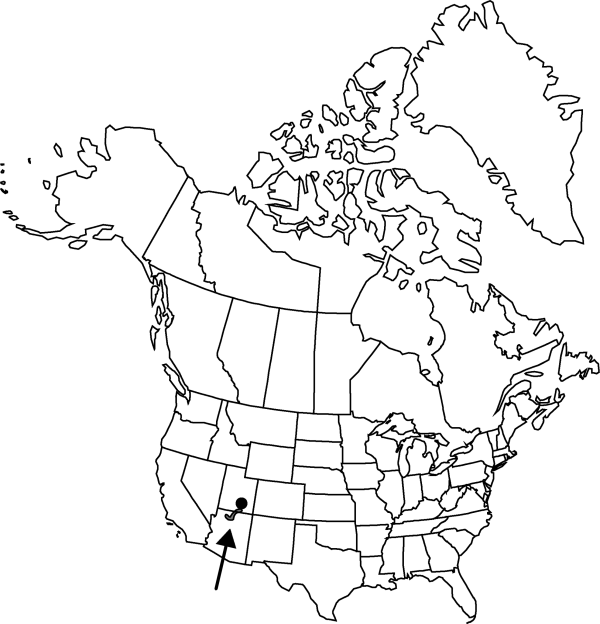Difference between revisions of "Opuntia basilaris var. longiareolata"
Cacti Arizona ed. 2, 43. 1950.
Common names: Grand Canyon beavertail pricklypear
Basionym: Opuntia longiareolata Clover & Jotter
Synonyms: Opuntia heilii S. L. Welsh & Neese
FNA>Volume Importer |
FNA>Volume Importer |
||
| Line 23: | Line 23: | ||
}}<!-- | }}<!-- | ||
| − | --><span class="statement" id="st- | + | --><span class="statement" id="st-undefined" data-properties=""><b>Stem </b>segments often decumbent, flattened apically, spatulate, (5–)9–18 × 4–11 cm; areoles 6–8(–9) per diagonal row across midstem segment, elongate to usually circular. <b>Spines</b> absent. <b>Fruits</b> spineless. <b>2n</b> = 22.</span><!-- |
-->{{Treatment/Body | -->{{Treatment/Body | ||
| + | |phenology=Flowering spring (Mar–Apr). | ||
|habitat=Mojave and Great Basin deserts, clay hills, flats, canyon bottoms to bluffs | |habitat=Mojave and Great Basin deserts, clay hills, flats, canyon bottoms to bluffs | ||
|elevation=600-1600 m | |elevation=600-1600 m | ||
| Line 45: | Line 46: | ||
|basionyms=Opuntia longiareolata | |basionyms=Opuntia longiareolata | ||
|family=Cactaceae | |family=Cactaceae | ||
| + | |phenology=Flowering spring (Mar–Apr). | ||
|habitat=Mojave and Great Basin deserts, clay hills, flats, canyon bottoms to bluffs | |habitat=Mojave and Great Basin deserts, clay hills, flats, canyon bottoms to bluffs | ||
|elevation=600-1600 m | |elevation=600-1600 m | ||
| Line 52: | Line 54: | ||
|publication year=1950 | |publication year=1950 | ||
|special status= | |special status= | ||
| − | |source xml=https://jpend@bitbucket.org/aafc-mbb/fna- | + | |source xml=https://jpend@bitbucket.org/aafc-mbb/fna-data-curation.git/src/9216fc802291cd3df363fd52122300479582ede7/coarse_grained_fna_xml/V4/V4_277.xml |
|subfamily=Cactaceae subfam. Opuntioideae | |subfamily=Cactaceae subfam. Opuntioideae | ||
|genus=Opuntia | |genus=Opuntia | ||
|species=Opuntia basilaris | |species=Opuntia basilaris | ||
|variety=Opuntia basilaris var. longiareolata | |variety=Opuntia basilaris var. longiareolata | ||
| − | |||
| − | |||
| − | |||
| − | |||
| − | |||
| − | |||
| − | |||
| − | |||
| − | |||
| − | |||
| − | |||
}}<!-- | }}<!-- | ||
-->[[Category:Treatment]][[Category:Opuntia basilaris]] | -->[[Category:Treatment]][[Category:Opuntia basilaris]] | ||
Revision as of 14:03, 27 July 2019
Stem segments often decumbent, flattened apically, spatulate, (5–)9–18 × 4–11 cm; areoles 6–8(–9) per diagonal row across midstem segment, elongate to usually circular. Spines absent. Fruits spineless. 2n = 22.
Phenology: Flowering spring (Mar–Apr).
Habitat: Mojave and Great Basin deserts, clay hills, flats, canyon bottoms to bluffs
Elevation: 600-1600 m
Discussion
The elongate areoles that the specific epithet implies are not at all characteristic for Opuntia basilaris var. longiareolata and are sometimes found on plants of other varieties.
Selected References
None.
Lower Taxa
None.
